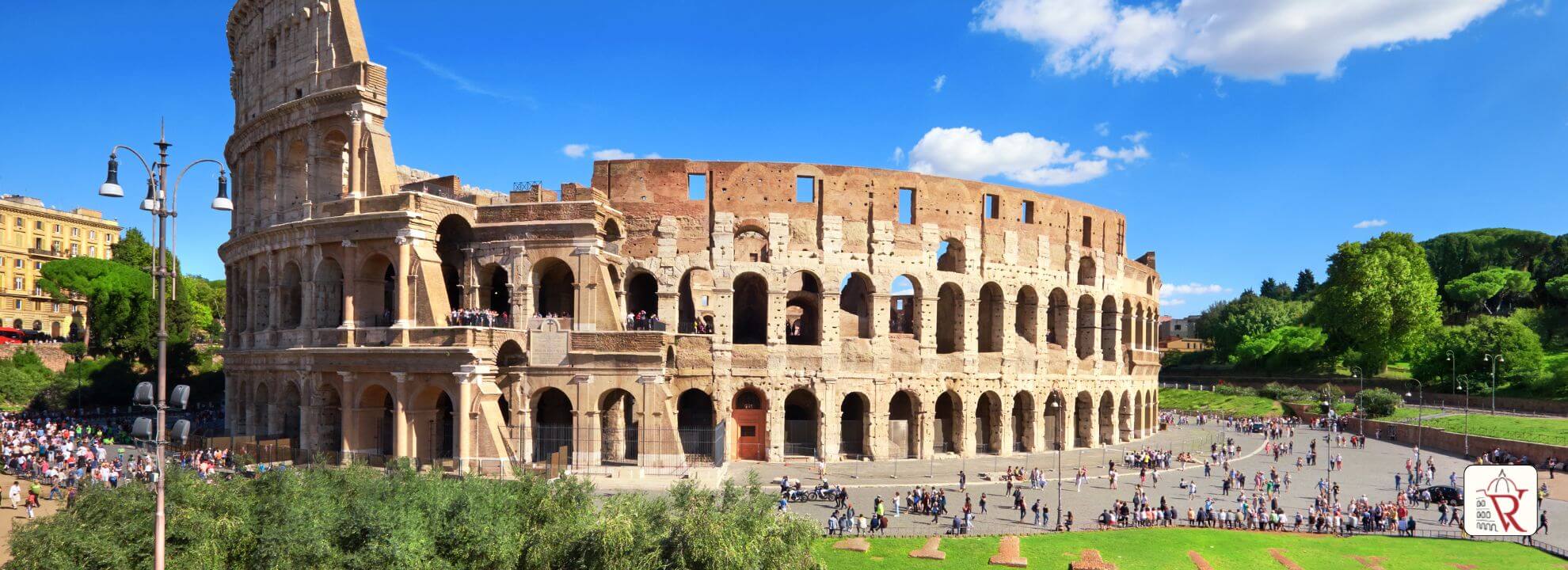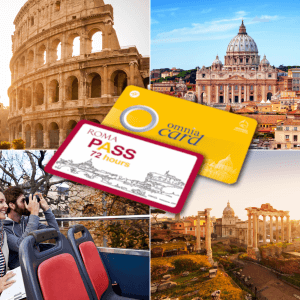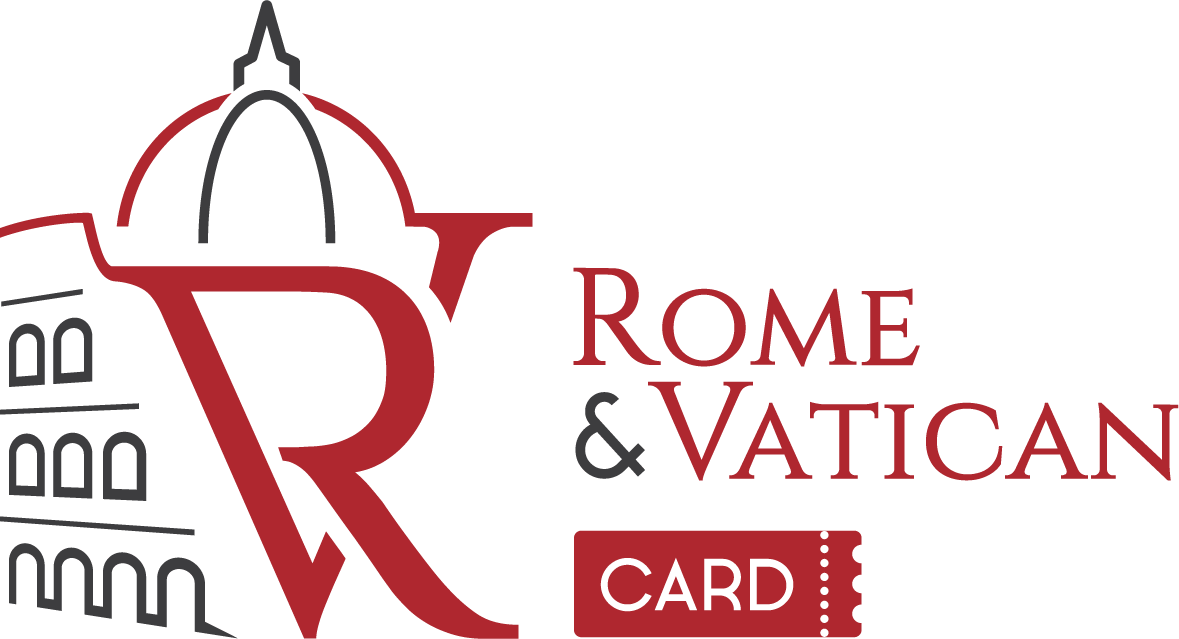12 Smart Tips for visiting the Colosseum
- 8 min read
In this guide you will find 12 tips about visiting the Colosseum, especially in hot season: ticket strategies, guided tour insights, hidden access, timing, heat management, crowds, viewpoints, food, safety and more.


Omnia card 72h + Roma Pass - Jubilee 2025
1. Best Ways to Secure Tickets for visiting the Colosseum
When visiting the Colosseum, buying tickets online ahead of time is crucial. Not only does this save you hours of waiting in line, but it also helps you avoid Rome’s intense midday heat. Additionally, online tickets often include entry to the Roman Forum and Palatine Hill, making your visit more comprehensive. Moreover, official sales platforms release ticket batches regularly, so checking back frequently can increase your chances. Be that as it may, having backup internet or a mobile hotspot can be helpful when completing your purchase. In any case, it’s always better to book early and secure your preferred date and time.
2. Why booking a guided experience enhances visiting the Colosseum
A guided tour adds real value when visiting the Colosseum. Firstly, you bypass long queues and head straight into the monument. Secondly, guides share stories of ancient Rome’s politics, architecture, and entertainment culture, giving life to every stone. Furthermore, these tours often include Palatine Hill and the Roman Forum, providing full historical context. In addition, some packages offer special access to restricted areas. To put it another way, if you want more than a simple photo opportunity, guided tours are the way to go. After all, the Colosseum is not just a ruin — it’s a living storybook.

Omnia card 72h + Roma Pass - Jubilee 2025
3. How to access the Arena and Underground areas of the Colosseum
For a truly memorable experience, consider visiting the Colosseum with special access to the arena and underground tunnels. These areas are not included in regular tickets; however, they offer an unmatched perspective on the venue’s original function. Surprisingly, many visitors miss this part due to lack of information. Nevertheless, the underground passageways and the Gladiator’s Gate add immense value to your tour. As a result, this upgrade is highly recommended. Not only will you gain access to otherwise hidden spots, but you’ll also enrich your understanding of how this grand amphitheatre operated.
4. How to protect yourself from heat and stay comfortable when visiting the Colosseum
During the warmer months, visiting the Colosseum can be physically demanding. Therefore, it’s important to prepare accordingly. Bring a refillable water bottle, wear breathable clothing, and apply sunscreen liberally. Besides, shade is almost nonexistent inside the site. What’s more, the surrounding Roman Forum is equally exposed. Accordingly, choosing early morning or late afternoon slots helps reduce sun exposure. In particular, visitors with children should take extra precautions. All in all, a bit of preparation will make your visit safer and more enjoyable.
5. Why avoid weekends and public holidays to visit the Colosseum
If possible, plan your visit on a weekday. On weekends and public holidays, the area becomes exceptionally crowded. This is mainly due to domestic tourism, cruise ship excursions, and tour groups. Consequently, the lines are longer and the atmosphere is more hectic. Conversely, weekdays — especially Tuesday through Thursday — tend to be calmer. Additionally, museums and nearby attractions may also be less busy. All things considered, weekday visits allow for a more relaxed and immersive experience.

Omnia card 72h + Roma Pass - Jubilee 2025
6. A smart entry hack: enter via Palatine Hill before visiting the Colosseum
Interestingly, your Colosseum ticket grants access to Palatine Hill and the Forum as well. Rather than entering directly through the main gate, consider starting your tour from Palatine Hill. Not only is this entrance usually less crowded, but it also lets you explore these adjacent sites first. Afterward, you can proceed to the Colosseum during your reserved time slot. In effect, this route optimizes your itinerary and helps you beat the crowds. To sum up, entering through Palatine is a smart and scenic alternative.
7. Where to find the most breathtaking views after the visit at the Colosseum
To capture unforgettable views, don’t miss the Monti stairs or the Capitoline Hill. These spots provide panoramic angles that are perfect for photography. Moreover, they allow you to appreciate the Colosseum in its broader archaeological setting. For instance, from the Campidoglio, you can glimpse not only the amphitheatre but also the Roman Forum and Arch of Constantine. Equally important, these viewpoints are free and open throughout the day. Sooner or later, every visitor wants the perfect shot — and these are the places to get it.
8. Dining tips: avoid tourist trap restaurants around the Colosseum
Dining near major landmarks can be tricky. Although many restaurants advertise authentic Italian cuisine, the quality often doesn’t match the price. For that reason, it’s best to venture slightly off the tourist trail. One of the top areas for eating near the Colosseum is Rione Monti — a charming neighborhood just a short walk away. This historic district is full of excellent restaurants, traditional trattorias, wine bars, bakeries, and artisanal gelato shops. Additionally, Monti’s atmosphere is more relaxed and local compared to the tourist-heavy perimeter of the Colosseum.
If you’re willing to walk a bit further, the San Giovanni area is another smart choice. Located just beyond the Colosseum’s southeast flank, it offers great value and authentic Roman cuisine without the crowds. Moreover, it’s less commercial and often frequented by residents rather than visitors. In addition, several food tours include stops in both areas, allowing you to taste Rome’s best without the hassle of research. To conclude, with just a short walk, you can upgrade your dining experience significantly when visiting the Colosseum.

Omnia card 72h + Roma Pass - Jubilee 2025
9. Stay vigilant: pickpocket risks
High foot traffic makes the Colosseum a hotspot for petty theft. Especially during busy times, pickpockets blend into the crowd and target distracted tourists. As a result, keep your valuables secure and your bags zipped. Also, avoid using backpacks for valuable items and consider wearing a crossbody bag or money belt. While the site is generally safe, basic precautions go a long way. Overall, staying alert ensures a smooth and worry-free experience.
10. Why visiting early or later improves your experience at the Colosseum
Morning visits offer the best conditions for exploring the Colosseum. The light is soft, temperatures are cooler, and the crowds are thinner. Similarly, late afternoon slots — particularly after 3 PM — can be surprisingly peaceful. If you’re buying tickets last minute, remember that the Forum entrance usually has shorter queues. Hence, starting your tour from there can still work in your favor. Ultimately, time of day can make a big difference. To maximize comfort and photo quality, aim for off-peak hours.
11. What to bring with you when visiting the Colosseum
Preparing a small but efficient day pack can make a huge difference when visiting the Colosseum. First and foremost, bring a reusable water bottle — there are several public fountains nearby, including the famous “nasoni,” where you can refill for free. In addition, a portable battery charger for your phone or camera is highly recommended, as you’ll likely use your device frequently for photos or navigation. Don’t forget a copy of your ticket (digital or printed), as security may ask to see it at multiple checkpoints. Also, carrying some cash is useful, since not all street vendors or cafés accept cards. To sum up, a well-prepared bag will help you stay focused on enjoying the monument, not on what you forgot.

Omnia card 72h + Roma Pass - Jubilee 2025
12. Combine visiting the Colosseum with nearby attractions for a full day itinerary
One of the best ways to structure your time in Rome is by combining visiting the Colosseum with nearby attractions. Indeed, the Colosseum is at the heart of Ancient Rome, and within walking distance, you’ll find the Roman Forum, Palatine Hill, the Capitoline Museums, and the Arch of Constantine. Afterward, you might continue toward Piazza Venezia or even reach the Pantheon and Trevi Fountain within 20–30 minutes on foot. Additionally, this area is rich in lesser-known sites like Trajan’s Market and the Mamertine Prison. If you want to maximize your day, plan your route in advance and wear comfortable shoes. Altogether, a well-thought-out itinerary ensures a richer experience beyond the Colosseum itself.
With these practical tips, visiting the Colosseum will be not only easier but also more enriching. For a complete overview of history, ticket options, best times to visit, and more, don’t miss our full guide to the Colosseum — your ultimate companion for exploring one of Rome’s greatest landmarks.

